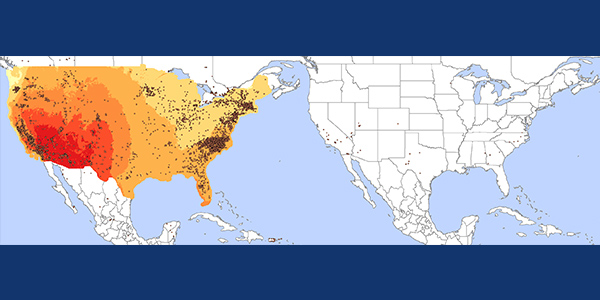By Rich Heidorn Jr.
ATLANTA — NERC stakeholders are expected to consider a new standard authorization request (SAR) to address inverter-based resources after the Standards Committee rejected two SARs proposed by CAISO in September, officials said last week.
CAISO submitted the SARs in May, saying it had recorded at least 14 occasions since August 2016 when inverter-based solar generation incorrectly tripped or ceased to operate during the routine high-speed clearing of short circuits on bulk electric system (BES) transmission. NERC has issued several reports and alerts following the two most serious incidents: the August 2016 Blue Cut wildfire, when 1,200 MW of solar disconnected; and the October 2017 Canyon 2 fire, which resulted in the loss of more than 900 MW. (See NERC Chief: Inverter, Fuel Assurance Standards Needed.)
The ISO proposed incorporating performance requirements for inverter-based resources connected to the BES in a revised NERC standard PRC-024, or developing a new standard for such resources and clarifying that PRC-024 applies only to synchronous generation.
At its Sept. 13 meeting, however, the Standards Committee rejected both SARs by a 12-5 vote on a motion by Dominion Energy’s Sean Bodkin, who noted the Institute of Electrical and Electronics Engineers (IEEE) is addressing the issues in Standard 1547-2018.
NERC is working with IEEE on the standards for inverter settings and developing instructions on compliance monitoring and enforcement activities related to the issue, James Merlo, NERC vice president of reliability risk management, told the Member Representatives Committee (MRC) at its quarterly meeting Nov. 6.
FERC Commissioner Cheryl LaFleur, who attended the MRC and Board of Trustees meetings, said she was concerned about the rejection of the SARs, saying “nothing clarifies the mind like an enforceable standard.” She said it was better for NERC and its stakeholders to design standards rather than respond to directives from FERC.
NERC CEO Jim Robb said he was disappointed that the two SARs “met with such headwinds at the Standards Committee.”
“I think we need to get over the notion that any standard creates peril and get to the point where standards create certainty,” he said. “And I think, particularly, in the case of these inverter resources, that’s a very, very important thing for us to do. … These resources are not going away. They’re already at scale in the West, and they will [soon] be at scale … in many parts of the country.”
Merlo said the Operating and Planning committees and the Inverter-Based Resource Performance Task Force will seek a new SAR to modify PRC-024 that will build on a white paper to be released in about two weeks identifying gaps between current standards and what’s needed by grid operators. “The expectation is the Standards Committee would take that up in December,” Merlo said.
“I’m optimistic that that will accomplish much of what we wanted to accomplish through the original two SARs,” Robb said.
The work may not stop with revisions to PRC-024, said Howard Gugel, NERC senior director of engineering and standards. “Then that task force is also going to go forward to say, ‘given that this is a brave new world and we have these resources, is there another standard that we should write that says how they should actually operate?’” he said in an interview. “And it’s not just limited to solar. … [idle EVs injecting energy into the grid are] an inverter resource also.”
NERC has already asked solar generators to modify their inverter settings to ensure voltage excursions don’t result in momentary cessation (MC) — when they stop injecting current into the grid. For inverters that cannot use another ride-through mode, NERC asked that MC settings be reduced to the lowest voltage value possible and that the recovery delay be reduced to one to three electrical cycles.
In arguing for the SARs, CAISO’s Keith E. Casey, vice president of market and infrastructure development, noted that NERC guidelines are not enforceable.
“Due to a lack of any standard addressing the minimum performance of inverter-based generation connected to the BES, original equipment manufacturers often apply standards for resources connected to the distribution system to BES resources,” Casey wrote.
NERC reported that most of the lost solar generation in the Blue Cut fire resulted when inverters incorrectly perceived a low frequency condition and tripped, not returning to service for five minutes or longer. “Five minutes may make sense on a rooftop, but five minutes is an eternity on the bulk electric system,” Merlo said.
NERC, which originally surveyed 13,543 MW of solar PV as potentially using momentary cessation, now believes all but about 1,952 MW do not use it or can overcome it with modified settings. (The survey covered only utility-scale solar generators at or above 75 MW, the threshold for generators that must register with NERC.)
“We understand a lot more than we did when we first saw the event just 18 months” ago, Merlo said.







